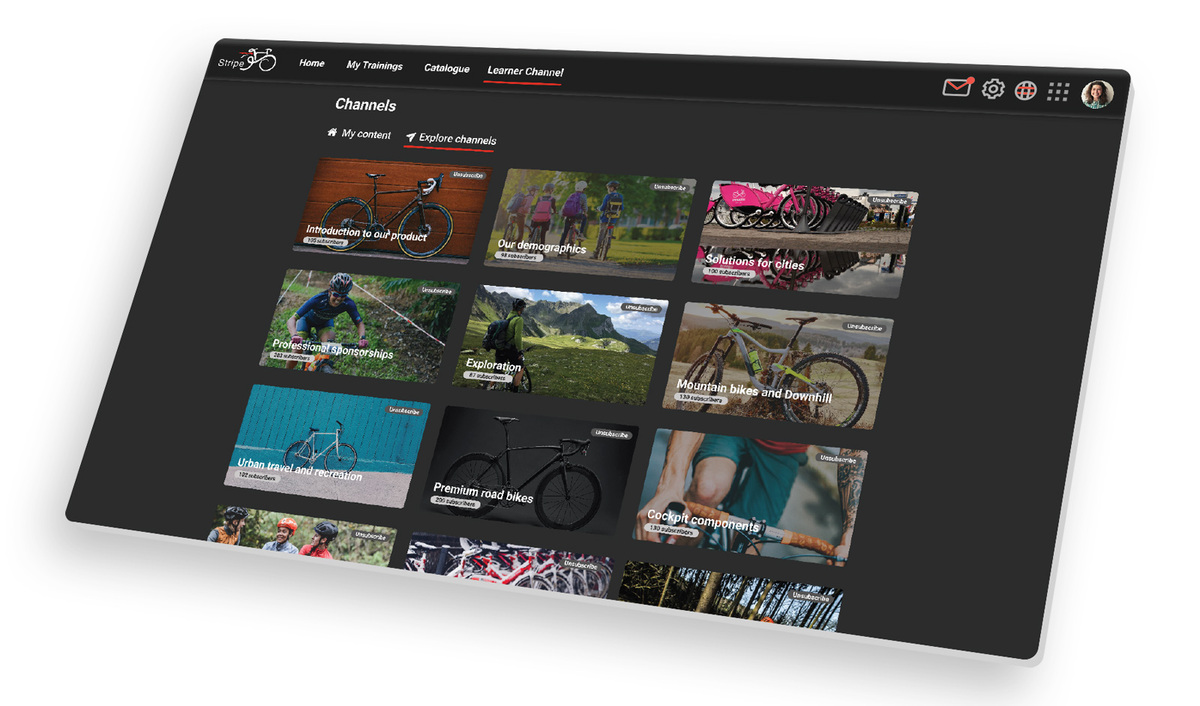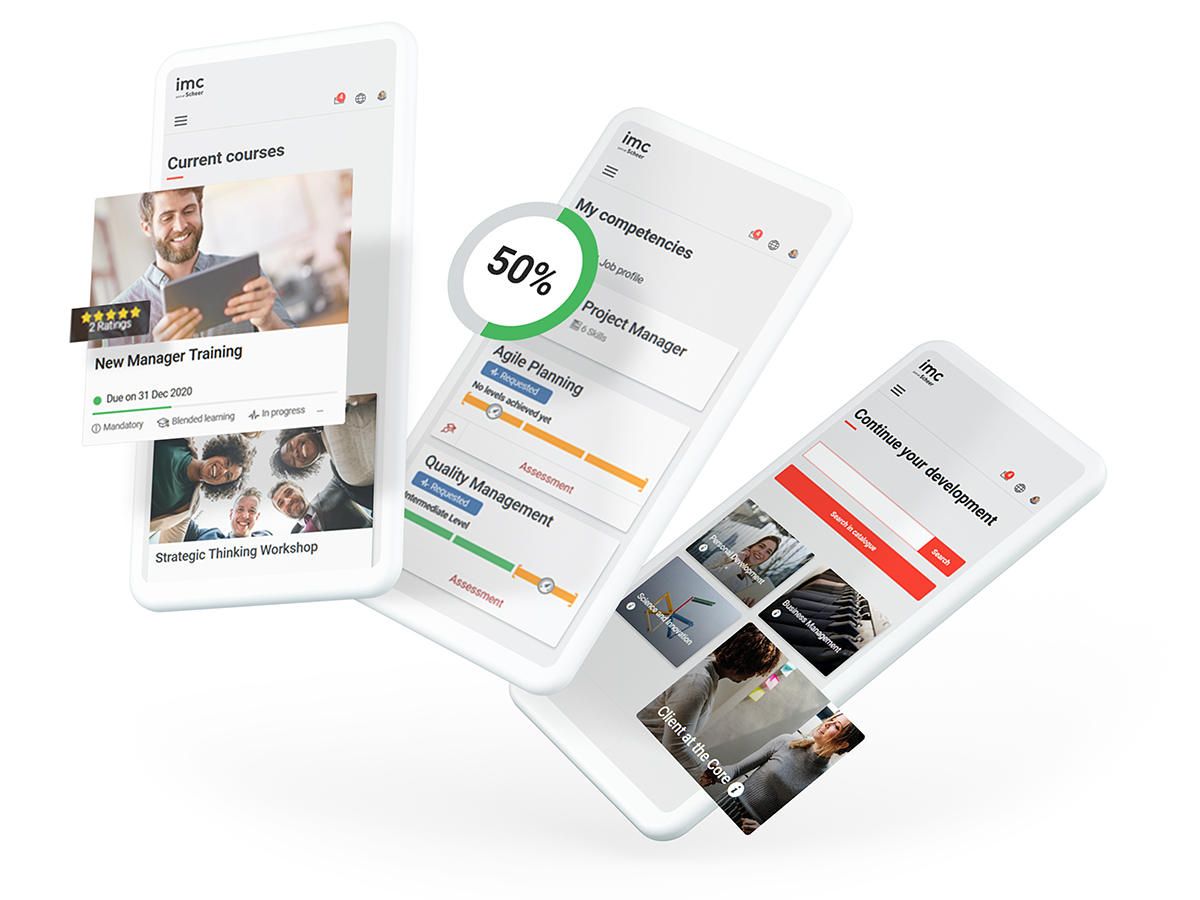
The Netflix Factor in Self-Directed Learning
How self-directed learning can be used in companies, what it adds, and where its limitations lie

Few things are exercising the minds of today’s L&D managers more than the question of how to give employees greater flexibility in their learning. This is part of a trend in many companies away from formal and towards informal learning. And from informal learning, it’s just a hop, skip and a jump to self-directed learning.
Self-directed learning, in a nutshell, is about giving employees the flexibility to decide for themselves what, when, where and how they learn. That sounds simple, but it actually requires a great deal of conceptual design work and careful technical implementation, not to mention trust in one’s employees. But it’s worth it because, planned properly and implemented strategically, self-directed learning can be a valuable complement to classic top-down learning.
This key fact is not lost on Mercedes-Benz Group AG’s Michael Temme and imc Learning's Marion Sander-Feld, who are currently working on ways of integrating new self-directed learning components and functions directly into the imc learning management system (LMS). In this article, we explain the benefits of self-directed learning, what its limitations are, and what Netflix has to do with it.
The case for self-directed learning
Given the current skills shortage, employee upskilling and professional development are matters of top priority for all companies, regardless of size. Automotive giant Mercedes-Benz Group AG is a case in point. Its approach to employee learning is guided by five key questions: what, who, where, how and when.
Mercedes is also looking closely at how face-to-face training can be translated into online learning. This requires new approaches because it is not possible to take analogue training digital without careful modifications and workarounds. Anything short of this will serve only to turn employees off.

Michael Temme, who manages innovation projects at Mercedes-Benz Global Training, is an expert on this. He has no doubt that for a training course to be effective, learners need to be able to see and understand how it is relevant to their work.
“We need to face the fact that what matters is not how much an employee learns, but how much they retain”, he says. “We know that learning content is more memorable if learners are able to apply their learnings immediately and are free to select the learning method that works best for them. People have to be able to decide for themselves what, when and how they learn. That’s why we use self-directed learning methods.”
No obvious benefit = no lasting learning
According to Temme, one of the major challenges with self-directed learning is that it requires both different skills and different (digital) systems from those required in conventional learning. For example, when trainers are in the same room as all the course participants, they can ask whether everyone has understood the material and, if necessary, can provide additional details or explanations.
This learning-reinforcing element is a lot more difficult to create in digital settings. To make up for this, Mercedes is employing a number of approaches, including the use of sharing and learning-specific networking (social collaboration) in the LMS.
Self-directed learning also requires employers to place a great deal of trust in their employees, in return for which the employees need to be extremely self-organized and highly self-motivated. The point is that employees will only feel motivated to learn in the first place if they can see that what they are learning is relevant and will benefit them in their day-to-day work.
Just as importantly, they will only retain what they have learned if they are able to apply and reinforce it in their day-to-day work very soon afterwards, as Ebbinghaus’s Forgetting Curve shows.
The Forgetting Curve produced by German psychologist Hermann Ebbinghaus shows that after 20 minutes, you will recall only 60% of a text you have learned. The loss of retention continues over time, so that after 60 minutes, you will recall only 45% of what you learned, and after 24 hours only about 34%. Long-term, you will retain only about 15% of the text you learned.
Paradox: More courses, poorer learning outcomes
Temme also notes that the vast amounts of digital learning content generated during the pandemic resulted in many learners feeling overwhelmed by the sheer volume of courses and unable to tell which ones were actually relevant for them. In other words, offering more courses does not necessarily lead to greater initial learning or long-term retention.
For this reason, Temme increasingly favours problem-based learning over classic ‘ready-made’ learning content. Learners engaging with a real-life problem or question can, by using the right social collaboration tools, for example, quickly and easily work their way towards a real-life solution with support from other learners and/or from experts.
By using social collaboration in this way and by learning in the moment of need, learners retain their learning for much longer. They progress from inert knowledge to understanding and, by applying that understanding immediately, they achieve specific competencies.
Netflix-style learning with channels
This leads into an important new feature that imc AG is currently developing for its LMS, the imc Learning Suite, in partnership with Mercedes: channels. The idea of channels is to make learning as easy as watching Netflix or YouTube: learners simply select topics they find interesting or that are relevant to their needs and are then presented with matching content recommendations.
It doesn’t matter what a topic’s form or scope is. The learner is shown everything that matches the topic: everything from short learning nuggets to in-depth explanatory videos to learner-made tutorials. The main focus, however, is on learning nuggets that are readily consumed as part of independent research and can be created without too much investment of time and effort on the part of experts.
These short learning units offer the added benefit that they can be quickly consumed in the moment of need and on the job, which leads to improved internalisation and retention of knowledge. Consequently, the learning outcomes are superior to those achieved in situations where employees first learn and then try to recall the knowledge months later when they need to put it into practice.

Users receive notifications whenever new content is added to the topics to which they have subscribed. Marion Sander-Feld, Head of Product Management for imc Learning Suite, explains: “Channels are topic-based containers. They are represented on screen by tiles and can contain various didactic learning nuggets, such as videos, links or PDFs. The scope is not limited to highly professional and expensive-to-produce training courses.
This is intentional, because we also want the channels to provide content that can be produced quickly in order to meet urgent learning needs. In providing this new feature, we also want to enhance the learning experience because making it faster and more intuitive to navigate the LMS and find the desired content significantly improves learning outcomes.”
By expanding the learning offering beyond the usual highly polished web-based training sessions and enabling all users to post their own learning content, channels will make learning a more bottom-up and accessible experience for all. This addition of user-generated content, which all subject experts will be able to create with ease, will help to reduce knowledge loss.
Limitations of self-directed learning
So far, so good. But as is so often the case, self-directed learning is not necessarily the one and only solution that’s needed. There will always be content that employees are loath to engage with – courses on data protection, compliance or IT security, for example.
These are extremely important topics that require not just learning, but genuine internalisation, so it’s best not to leave that entirely to voluntary self-selection. But even with compulsory training like this, the managers responsible should still apply the problem-based strategies of self-directed learning.
Thus, if the topic is cyber security, the content should present concrete examples and real-life problem scenarios that show employees how they can help prevent cyberattacks. And if this approach works with less-than-popular courses, it is sure to be a major success when it comes to self-selected content. Because learning should be like watching Netflix: child’s play.

Diary of an LMS
If an LMS wrote a diary - what would it say?
We thought about that and share some tips for LMS professionals, told a little differently...

Informal learning: Everyday hero of work
“Formal learning is like riding a bus. Informal learning is more like cycling.” We explain what this means and share some key facts and recomemndations

More about our LMS
If you would like to learn more about imc's Learning Management, check here for more information.
